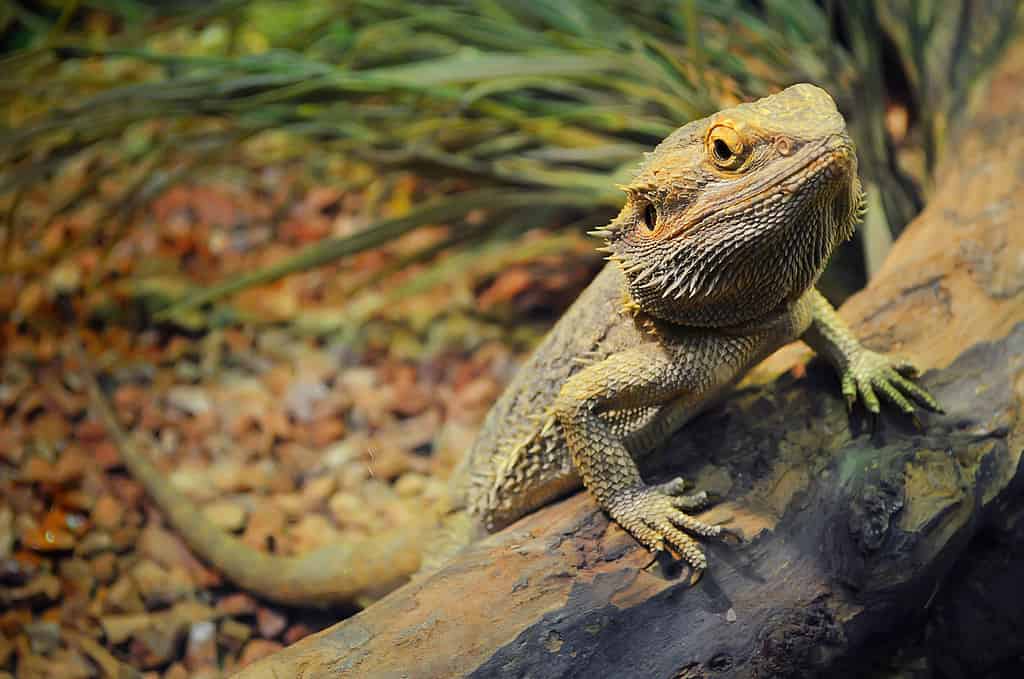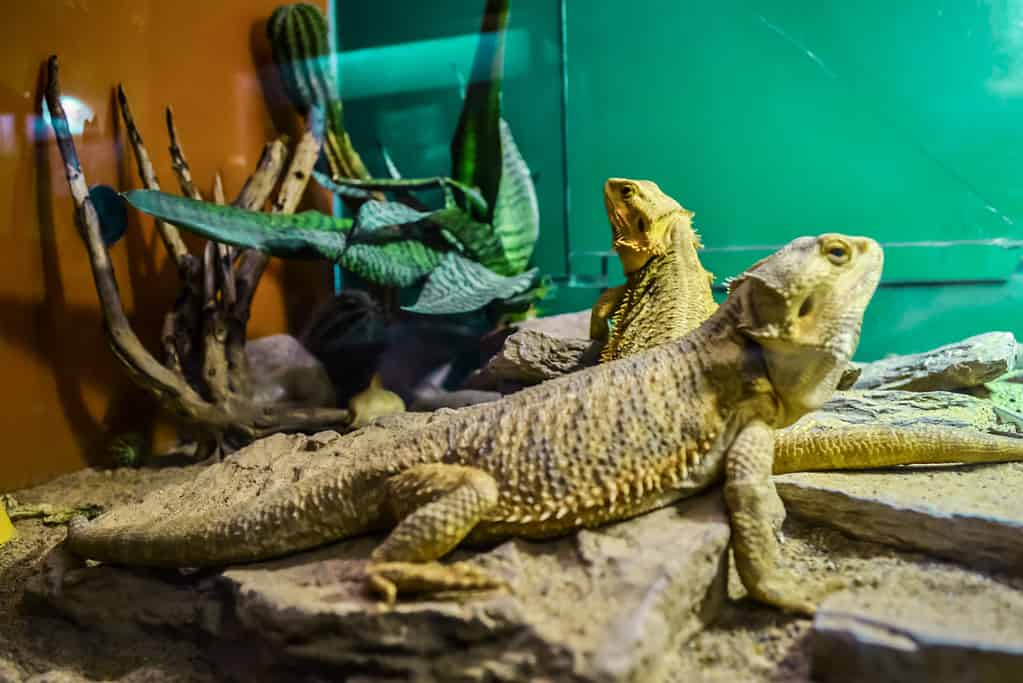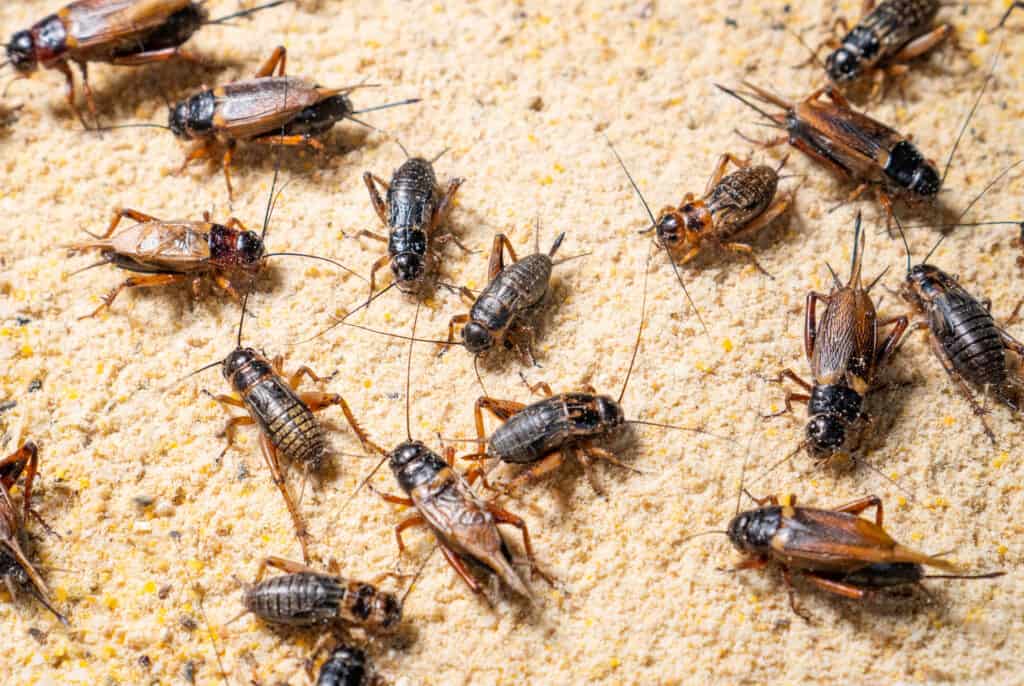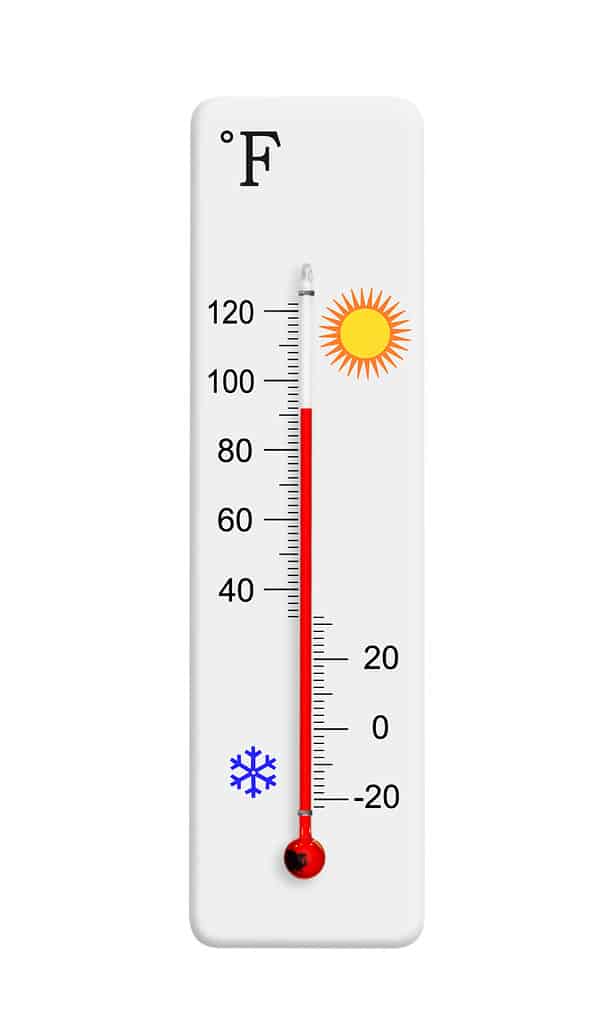Bearded dragon mouth rot is one of a handful of diseases particular to lizards and common in bearded dragons. Fortunately, these little black-bearded lizards (their lower jaw turns black when they bob their heads up and down) are pretty robust, resilient animals.
The other good news is that mouth rot is far more common in iguanas than in bearded dragons, though it’s still common enough for concern in the latter. There are also plenty of signs and symptoms to catch if your bearded dragon is suffering from what is otherwise known as, infectious stomatitis.
As a bacterial infection, mouth rot is also curable, so long as you act quickly enough and spot the early warning signs. So you know what to look for, we’ll cover all the potential symptoms, along with treatments, causes, and how best to avoid bearded dragon mouth rot in the future.
Causes of Bearded Dragon Mouth Rot
Aeromonas, a “gram-negative” bacteria, is the root cause behind bearded dragon mouth rot. It doesn’t help if your beardie has a compromised immune system. The causes behind mouth rot generally revolve around unsanitary living conditions.
- Unhealthy habitat
- High humidity
- Tank overcrowding
- Injury inside the beardie’s mouth
- Lack of water
- Malnutrition or poor diet
It’s important to keep a bearded dragon’s terrarium nice and clean. Unsanitary conditions attract pests, such as mites, which spread the bacteria that causes bearded dragon mouth rot.
Your beardie can also get mouth rot by damaging the inside of its mouth, exposing it to bacteria, and allowing for an easy ingress point. There should also be 30 to 35 gallons (0.13 cubic meters) of terrarium space per beardie since overcrowding hurts their health.
It’s important to know and provide the proper nutritional value that bearded dragons need, as well as water. Without an adequate supply of either, a beardie will develop a compromised immune system.
Too much humidity is another factor. Bacteria thrive in such environments, and beardies are just fine in an arid type of environment. Lastly, any of the above factors will possibly cause undue stress on your beardie, further compromising its health and immune system.
Symptoms of Bearded Dragon Mouth Rot

Mouth rot is visible as a series of yellow patches within the mouth.
©Ken Griffiths/Shutterstock.com
If you’ve never had a beardie before, it may be difficult to recognize the early symptoms of bearded dragon mouth rot. After all, some symptoms are small and reveal themselves in ways that newbies may have difficulty recognizing as problematic.
- Patches of yellow on the inside of the mouth
- Swollen head
- Loss of appetite
- Aversion to water intake
- Loose teeth
- Peeling skin
- Discharge from eyes and nose
- Yellow pus coming from inside the mouth
- Teeth are breaking
While some of the above seem excessive enough to be obvious, they aren’t always. This is especially true if you don’t pay close attention to your beardies as they go about their daily lives inside a terrarium. You may also assume that skin peeling or yellow patches inside the mouth are completely normal because you’ve never experienced anything different.
That’s completely understandable, however, as a new beardie owner, it’s incumbent upon you to research and understand the common behaviors and diseases that affect bearded dragons, which includes mouth rot.
While all of the above symptoms sound pretty bad, all but the skin peeling and discharge from the nose and eyes are early symptoms. It’s a good idea to check up on your beardie from time to time, even removing it from its environment for a closer inspection if you feel like anything is off.
Watch your beardie closely as it eats. They don’t have lips, so it’s not difficult to see inside their mouths while they’re chomping down on something particularly delicious.
Treatment for Bearded Dragon Mouth Rot
While there are some effective holistic treatments for your beardie at home, bearded dragon mouth rot is best if initially diagnosed and treated by your veterinarian. Some home remedies below are excellent companion treatments to get your beardie back on its feet in no time.
Antibiotics
Your veterinarian will most likely give your bearded dragon antibiotics. However, initially, your vet will give your beardie an injection. This is because it’s often difficult to orally administer antibiotics to a beardie who has serious problems with their mouth. Of course, that makes perfect sense. Oral antibiotics may be called for, but they’ll come later down the line.
Home Treatments
This particular at-home treatment is a little difficult for first-time beardie owners dealing with bearded dragon mouth rot. Fortunately, you’ll learn quickly and will know what to do if there is ever another problem.
You need two components, both of which are available at local pet stores, large pet retailers such as Pet Smart and Chewy, or at a nearby feed and seed. Nolvasin and Betadine are the two components, and you will also need a cotton swab and a cup of warm water.
If you’re hesitant about using a cotton swab, a Q-tip is fine, so long as you’re aware that it will take longer. Mix the two solutions in the water, according to the instructions on the label. Dab your cotton swab or Q-tip in the water and rub the solution on the infected (yellow patches) area of the beardie’s mouth.
There are other solutions as well, including a saline rinse. Talk to your veterinarian about what’s best in your beardie’s situation.
Surgery and/or Buildup Removal
In the worst case scenario, your vet may need to do surgery, removing sections of flesh and teeth to get rid of the worst of the infection. While that sounds bad, your vet probably won’t recommend the surgery route if your beardie is a lost cause.
As your bearded dragon recovers, you will need to feed it an all-liquid diet and stay on top of its daily needs.
Bearded Dragon Mouth Rot Prevention Tips
Of course, the best course of action is to avoid bearded dragon mouth rot altogether. This requires a good deal of preventative maintenance in the beginning, and you need to follow up by establishing a routine.
1. Keep the Water Clean

A bearded dragon will have to learn to drink from a reptile water bowl. However, there are other methods of water delivery.
©Shinedawn/iStock / Getty Images Plus via Getty Images
Clean water for your bearded dragon is imperative. Oftentimes, your beardie will get all the water it requires by spraying water droplets on kale before feeding it to them. They’ll get the water within the Kale along with the water that’s on it.
Empty and clean the reptile bowl daily, especially if you see that it’s looking dirty. That’s assuming your beardie recognizes a bowl of water for what it is. The kale and water spray method is an effective water delivery method until you can teach your beardie that standing water is something it wants.
2. Clean Your Terrarium

Two yellow beardies in the terrarium. Beautiful bearded dragon sitting on the stone next to plants in their home.
©Blincov/iStock / Getty Images Plus via Getty Images
You don’t have to do anything wild or laborious. Just give your terrarium a good wipe-down sometimes. Once every few weeks, however, you should do a deep cleaning, which involves removing your beardie, the substrate, and decorations.
Clean the tank with hot water and spray it down with a 10% bleach solution. Rinse it down with hot water again and allow it to air dry. Carefully place everything back in, along with your beardie and the job is complete. Of course, it’s a good idea to keep a litter scoop nearby for scooping up waste whenever you see it.
3. Provide Your Beardie with a Nutritional Diet

Crickets are a bearded dragon favorite.
©iStock.com/amnat jomjun
Half of the battle is food, quite literally. A healthy beardie that’s getting all the nutrition it needs will have a robust immune system, able to counter potential bacterial infections before they begin. A little proactive feeding will save you a lot of heartache and money down the road.
Bearded dragons have a fairly diverse diet and there are a lot of things they can eat, including crickets, blueberries, mealworms, and a selection of veggies. Stay on top of their dietary needs, and you won’t have to worry about their overall nutrition.
4. Keep the Temperature and Humidity Nominal

Bearded dragons need plenty of heat to thrive.
©Tomas Ragina/Shutterstock.com
Your beardie requires strong, reliable UVB lighting, along with 108 °F (42.22 °C) to 113 °F (45 °C) basking temperatures and between 72 °F (22.22 °C) and 99 °F (37.22 °C) regular temperature.
Stick with an ambient humidity between 30% and 60%. It’s easy to find a good thermometer and humidity gauge combo, especially if you have a pet store close by. However, you can order them on Amazon or from any online pet store.
Final Thoughts
Bearded dragon mouth rot is no fun to treat. With the proper preventative maintenance and a solid diet and cleaning routine, you will never have to. Beardies are fairly low maintenance, but that’s not the same as saying that no maintenance is required.
Like all animals, they have specific needs. If you provide them with a high-nutrition diet, a solid water supply, plenty of breathing room in their environment, plenty of heat, moderate humidity, and some occasional exercise, you’ll have a happy, healthy bearded dragon on your hands.
The photo featured at the top of this post is © Opayaza12/Shutterstock.com
Thank you for reading! Have some feedback for us? Contact the AZ Animals editorial team.






